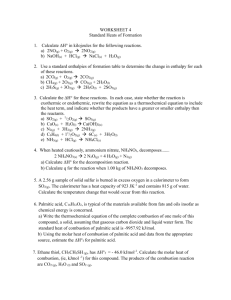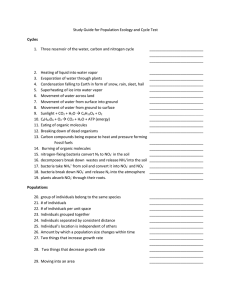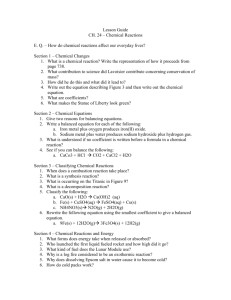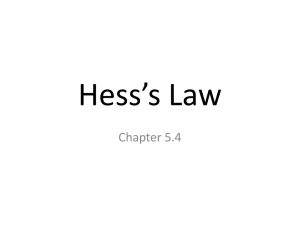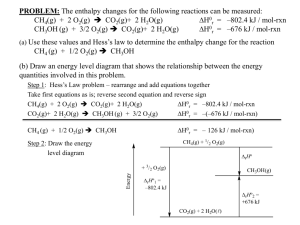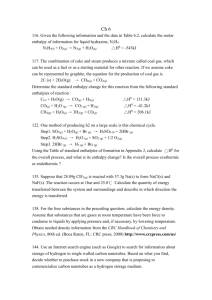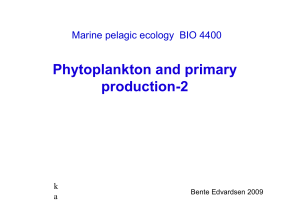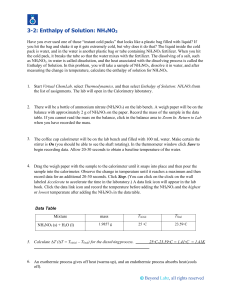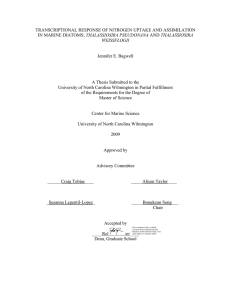Calorimetry Example Measuring Heat
advertisement
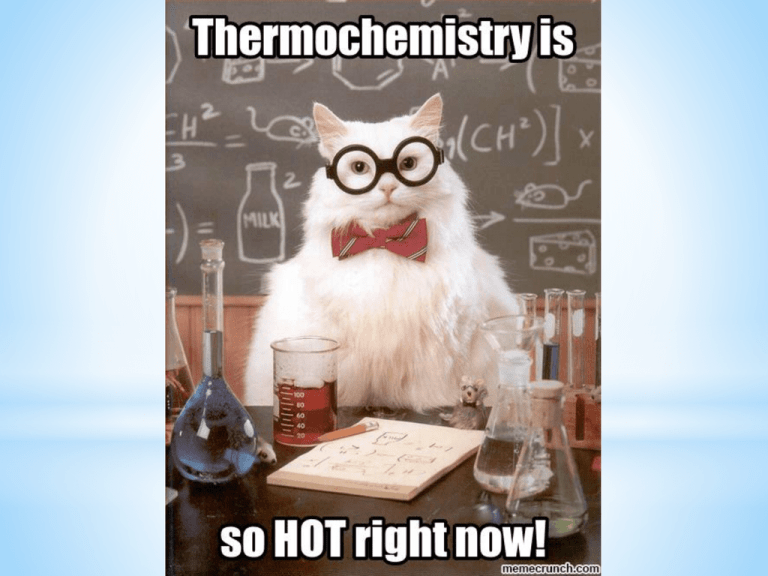
* * *Calorimetry is a laboratory technique used to measure heat flow *Based on the law of conservation of energy *Idea that the heat released by the system equals heat absorbed by the surroundigs or vise versa; q = -q * *An ice cube is added to a warm cup of water. *The amount of heat used to melt the ice cube is the same amount of heat lost by the warm water. * *insulated device used to measure heat flow *Either measure the heat absorbed or released during chemical/physical change * *Enthalpy (H) is the heat content of a system at constant pressure *Thermochemistry uses the change in enthalpy(H) to study heat changes *At constant pressure, q = H *Heat of reaction (∆Hrxn) is the change of enthalpy in a chemical reaction * *All chemical and physical changes release or absorb heat *Exothermic: releases heat; q is neg; H is neg *Endothermic; absorbs heat; q is pos; H is pos * *Equation that includes the physical states of all reactants and products (1 atm, 25oC) and the energy change, H *Endo *NH4NO3(s) NH4+(aq) + *Exo *CaO(s) + NO3-(aq) H = 27 kJ H2O(l) Ca(OH)2(s) H = -65.2 kJ * *Endothermic : H is positive; heat is on the reactants side of the equation (Heat absorbed) *NH4NO3(s) NH4+(aq) + NO3-(aq) H = 27 kJ *NH4NO3(s) + Heat NH4+(aq) + NO3-(aq) *NH4NO3(s) + 27kJ NH4+(aq) + NO3-(aq) * *Exothermic : H is negative; heat is on the products side of the equation (Heat released) *CaO(s) + *CaO(s) + *CaO(s) + H2O(l) Ca(OH)2(s) H = -65.2 kJ H2O(l) Ca(OH)2(s) + Heat H2O(l) Ca(OH)2(s) + 65.2 kJ * *Heat of combustion is the enthalpy change for the complete burning of one mole of the substance *CH4(g) + 2O2(g) CO2(g) + 2H2O(l) H = -891kJ *CH4(g) + 2O2(g) CO2(g) + 2H2O(l) + Heat *CH4(g) + 2O2(g) CO2(g) + 2H2O(l) + 891kJ * A hot piece of metal (at 155°C) with a mass of 4.68g is placed into 53.9 grams of water at 22°C. The water (Cs = 4.184 J/g°C) heats up to 37.1°C. What is the specific heat of the metal? * How much heat is released by the combustion of 250.0 g of octane, C8H18? Octane ΔHcomb = -5471 kJ/mol
